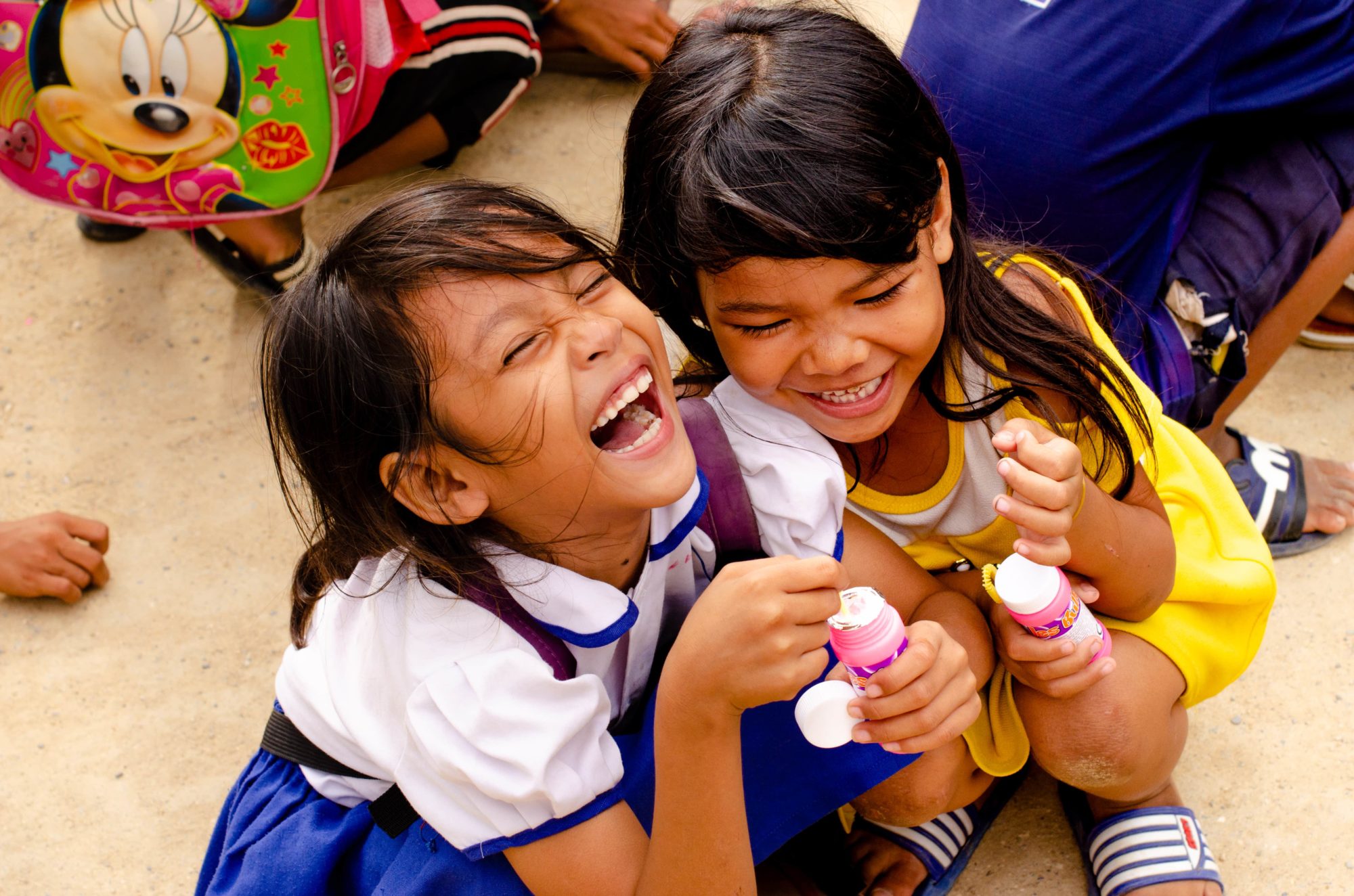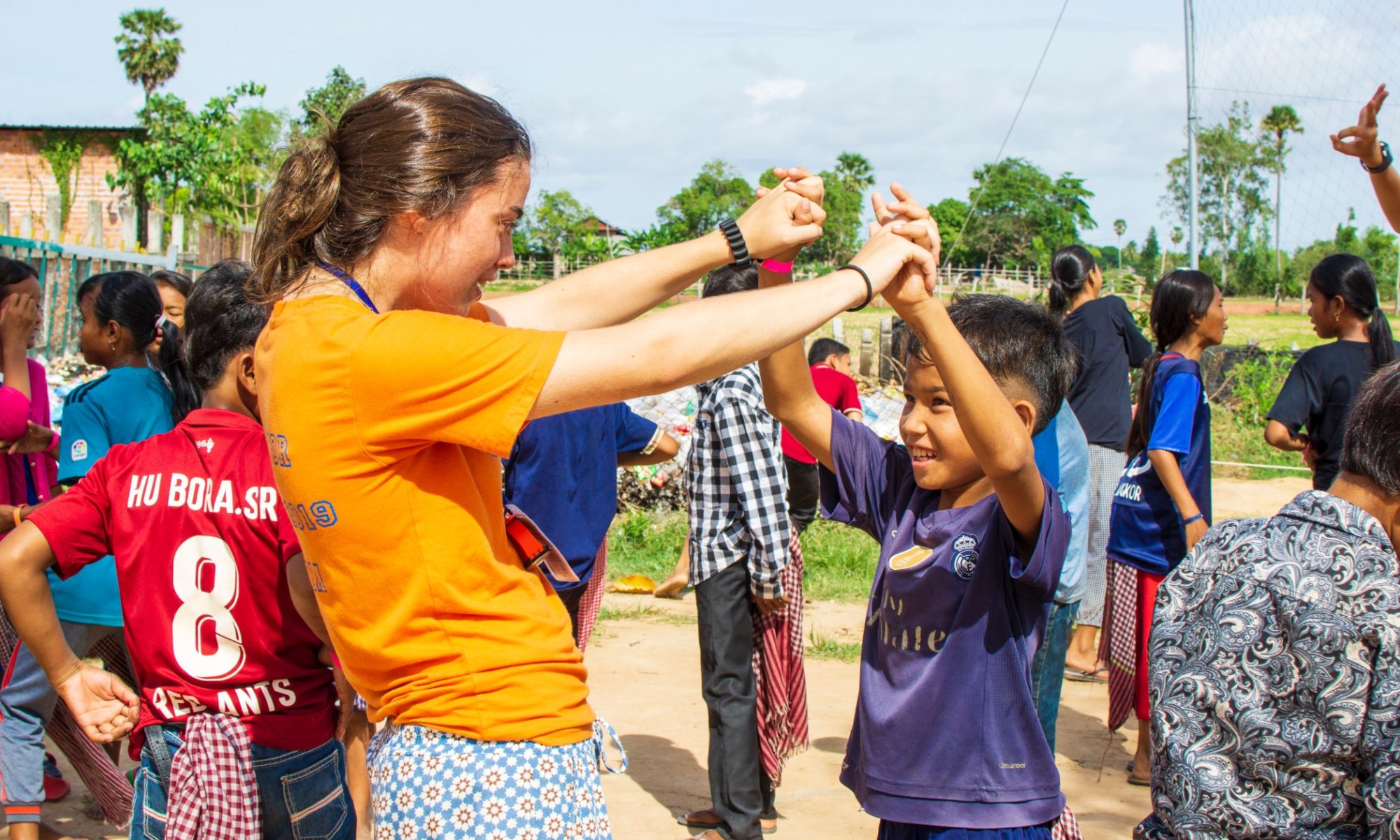Aranh is one of the most recent projects, created just two years ago and located in Siem Reap’s province. Although it takes fourty minutes every morning for the monitors to arrive there, the journeys by truck are not an issue for them.. It is another fun moment during which all of the monitors, European and Khmers, sing and cheer up themselves.
“One more child working should not be acceptable, it is the most important issue for me”, Marta.
This project has something special as it is located in a school. While the children from the School Continuity Program run around the playground, other students are in the classrooms learning their lessons. Sometimes, the students form lines to watch the children from the School Continuity Program play and eventually join them. This exception is due to an agreement made between PSE and the headmaster of the school, both aware of the necessity of opening a new camp in this area.
Indeed, many of the children attending Siem Reap Central’s program stopped going because, either they lived too far, either they had school lessons and they did not have time to go anymore. But that was not it. Close to the paillote there is a neighborhood where a dumpsite on which lots of children are still working. There were more than enough reasons to start a new project here. “If only one child comes from that neighborhood or from that dumpsite, everything that is done in this camp would be worth it. One more child working should not be acceptable, it is the most important issue for me”, said Marta, the European coordinator for the Aranh project.
“Phnom Penh is the heart of this program, but it is also necessary to have a camp in Siem Reap or Sihanoukville because here too there are children working on the dumpsites”, said Jules, a second year monitor.
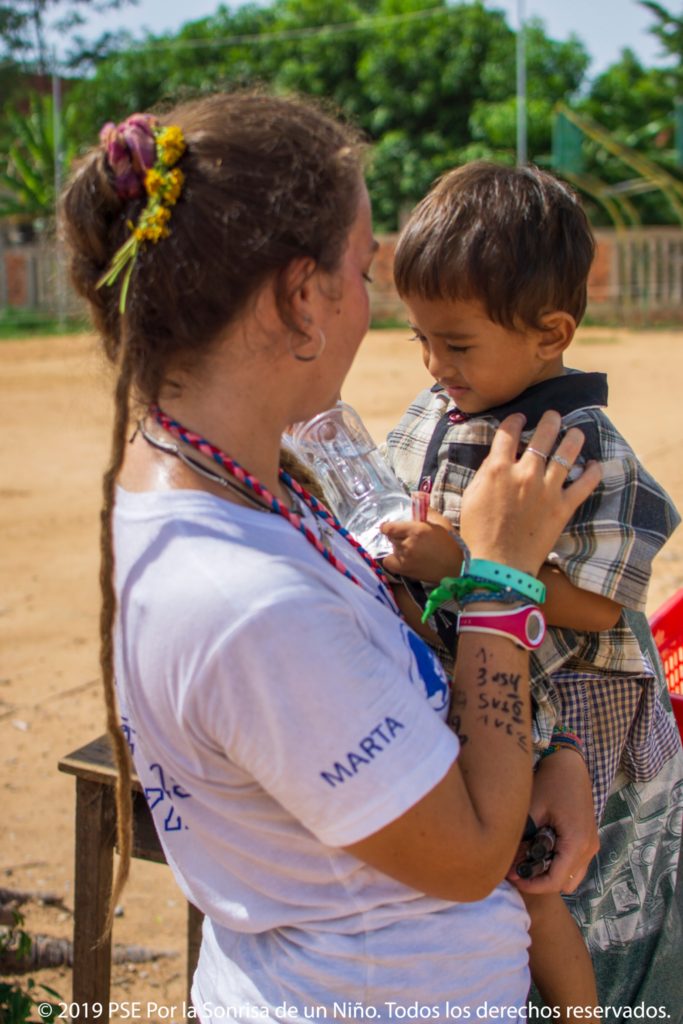
In this camp, the children are divided in two groups: the ones from the morning and the ones from the afternoon. The first ones start arriving around 7 and half an hour later come those arriving by bus. As many children cannot come walking, there is a bus that drives to the poorest zones to pick them up and brings them back at the end of the day. Once they arrive, they are taken to the showers and they gather all together during breakfast before being splitted among the kroms (groups) they will belong to during the day.
“Towards global problems, we all have the same point of view”, Enrique.
Starting then, and depending on the day, activities such as Big Games, Ferias, Waterparty and others take place. However, there is always a message, an objective behind each one. “I really enjoyed an activity which I did about recycling. At the beginning the children had to pick up trash from the camp and then run a race sorting out the different types of trash: plastic, glass, organic and paper. Then they had to put them in the respective dustbins which I did with posters and buckets and we asked them several questions about how they recycle at home or in their daily life. Many answered with examples which we know and apply in Europe. In conclusion, what we get from this is that, towards global problems, we all have the same point of view”, explains Enrique, a first year monitor.
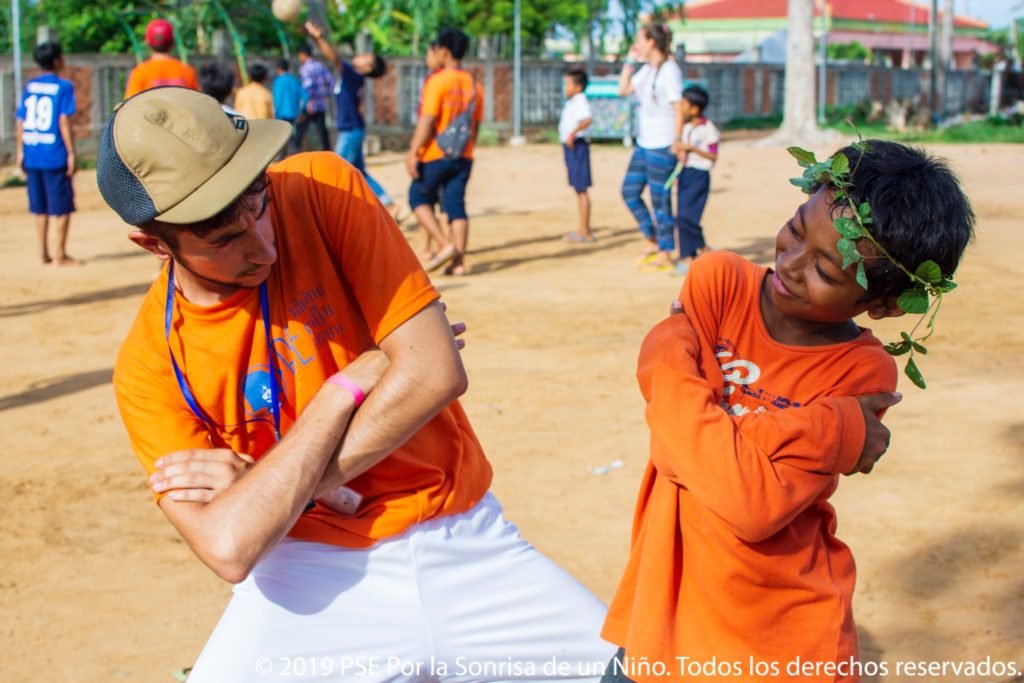
The activities applying the emotional intelligence concepts start to be implemented in the program. Very basic notions are first seen, but the objective of the monitors is to get as deep as possible within this notion to ensure the children understand it well. “This week we worked on how to identify and recognize its emotions. Within the concept of emotional intelligence we try to work first emotional consciousness : knowing the vocabulary, how it can be felt and how can everyone feel things differently than someone else,…” comments Marta.
In Aranh, most of life is spent outdoor so we try to spend as much time as possible under a roof.
Later, they’ll get lunch under the roof of the camp. In Aranh, most of life is spent outdoor so we try to spend as much time as possible under a roof to prevent the kids being constantly under the sun.
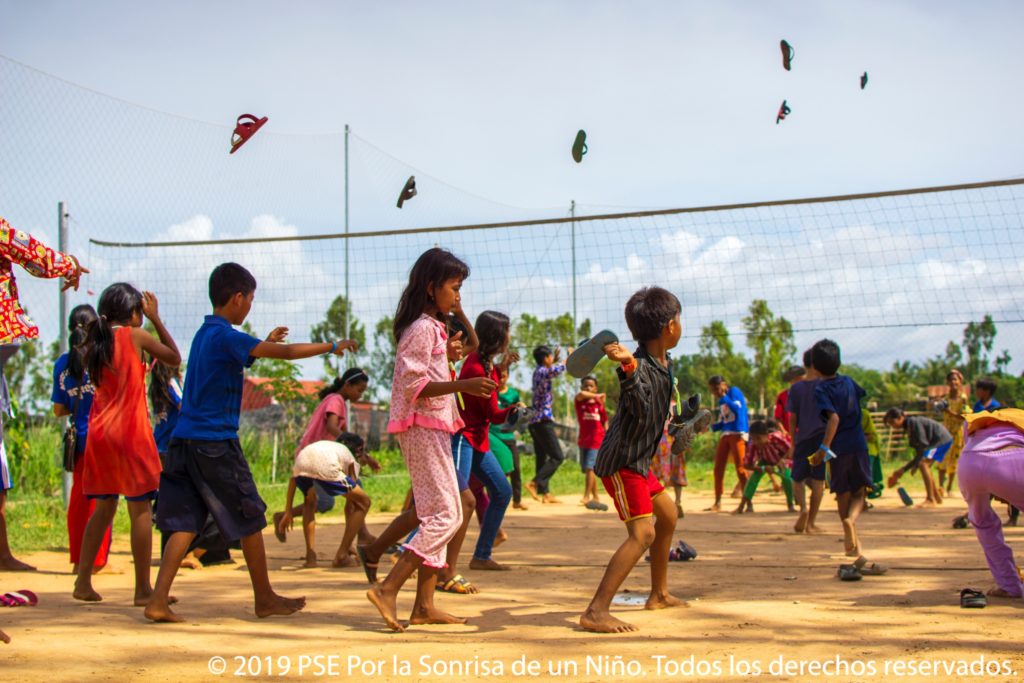
At eleven, it is meditation time during which the children relax after the morning’s games. Then comes the time to get some energy with a good lunch. this is the most chaotic moment of the day, as the two groups of kids are at the same time at the same place: the morning ones ending their half-day, and the afternoon ones who start to arrive. That might be stressing because the monitors do not always know which kid belongs to which groups, but they always end up managing it. The solution: when the first ones start their lunch, the second ones get their showers.
Once everyone is fed, some go to take a nap while other are driven back home, some go to school when others go back home. The children form lines while the monitors sing and dance to wake and cheer them up for the afternoon activities. The volunteers prepare the new games and workshops that will rhythm the rest of the day. It is finally time to play! After having played, learnt, ran et laughed a lot, a snack and a gouter are given to the kids who are going home around 4. As for the first group, they go back home by walk or by bus according to where they live.
The School Continuity Program becomes a second home for them.
This week they also have been visited by some of the monitors from the Medical Team of Phnom Penh : Alba, Jaime and Rosa. With them, the kids attend new activities, such as the sensitization workshops about sexually transmitted disease as HIV. The lack of information about health and hygiene is even more obvious in these activities during which they are asked about their knowledge on the topic. That is why the work realized by the Medical Team is so important within the paillote.
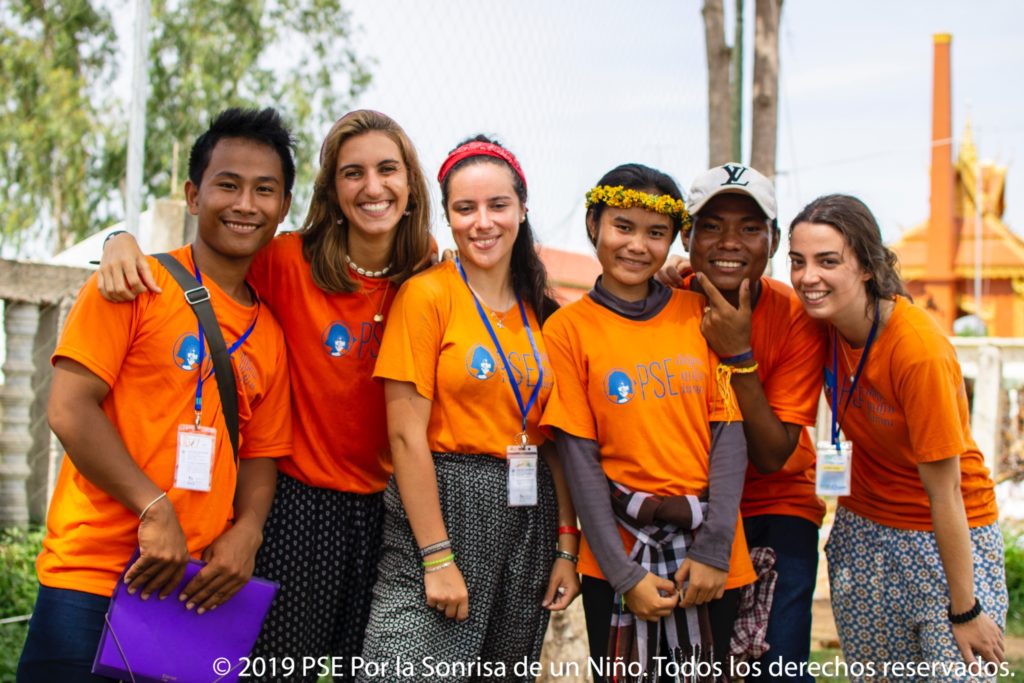
In Aranh, people breath a very specific joy and illusion. In every activity, you can see the connection that exists between the monitors. By spending so much time together, they have became a big family. This is something that they also pass on to the children, and the School Continuity Program becomes a second home for them.
